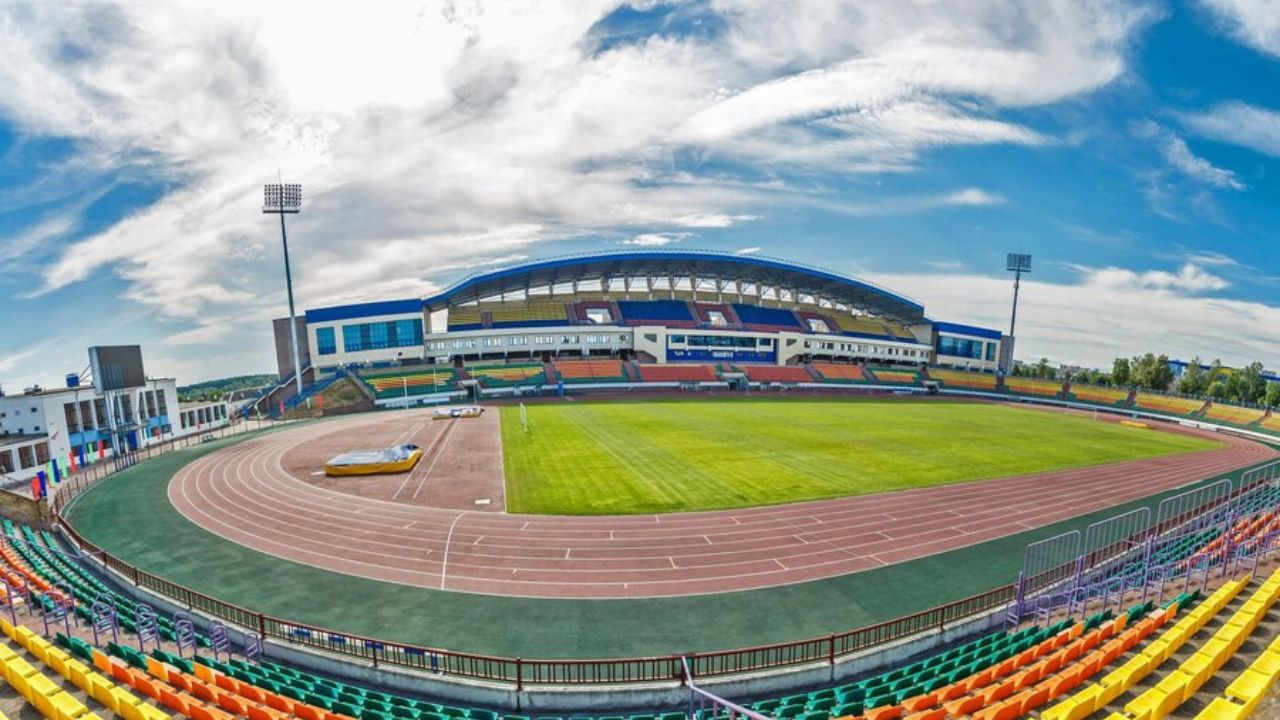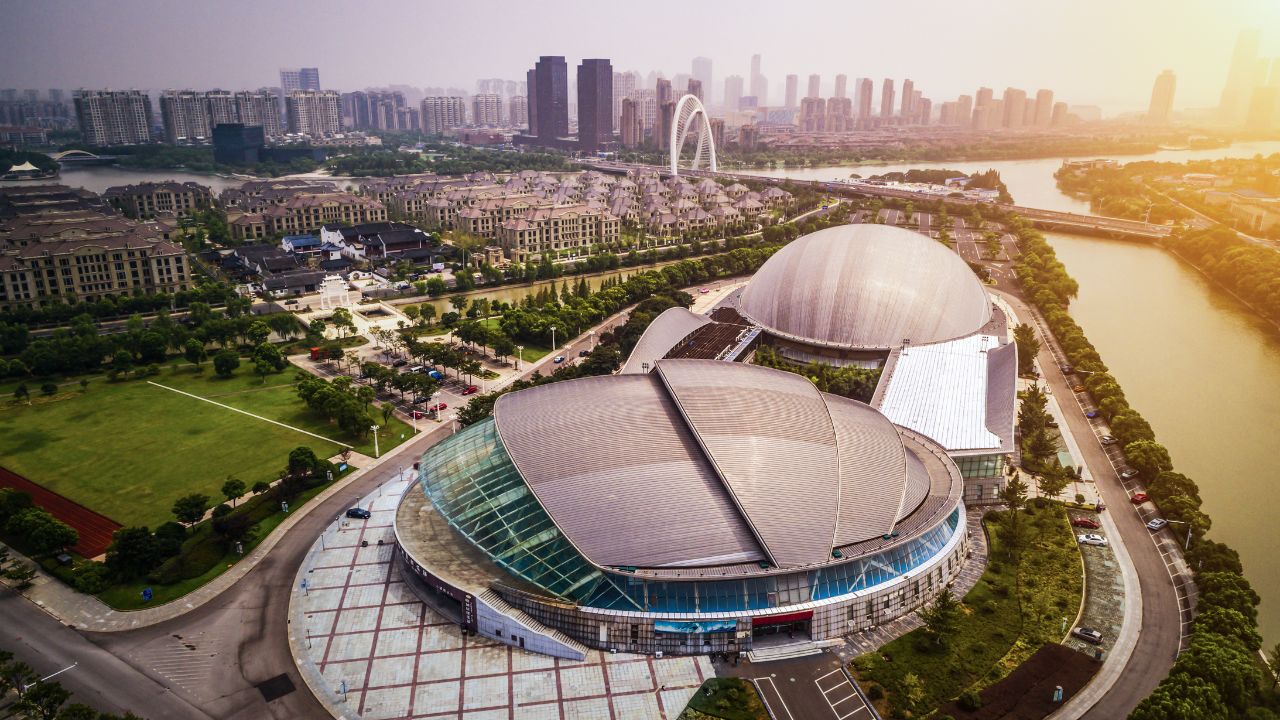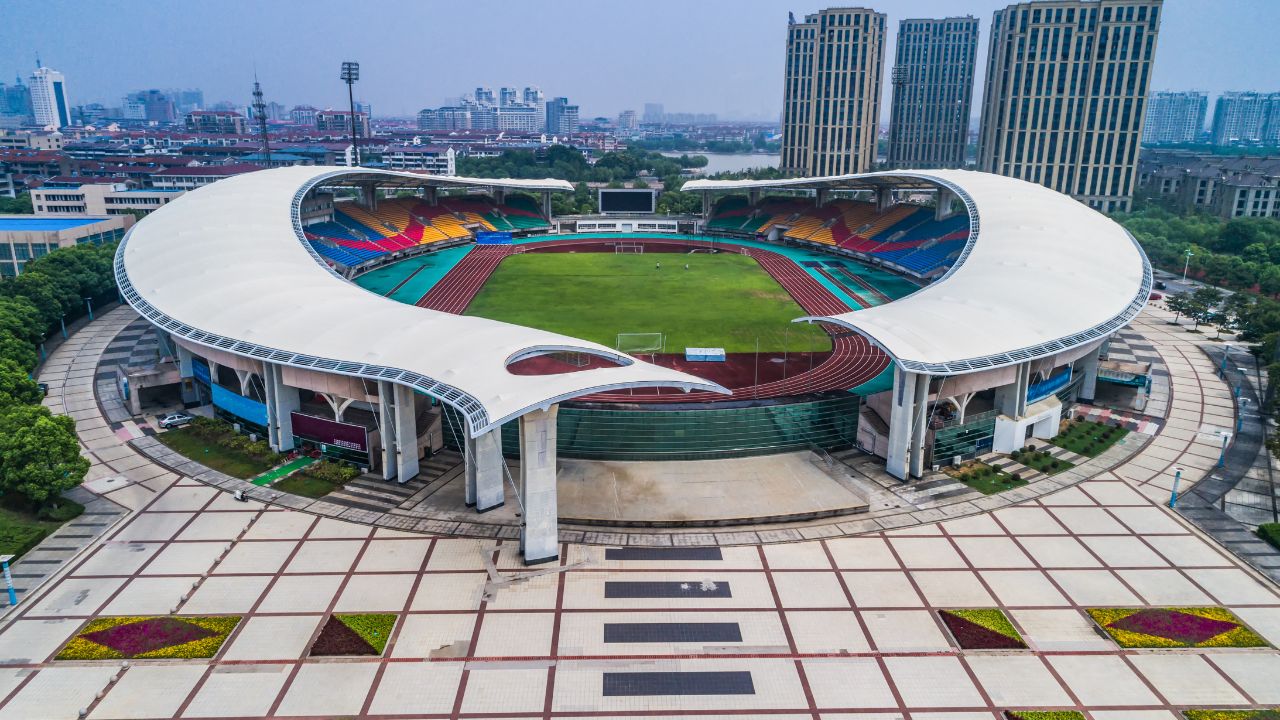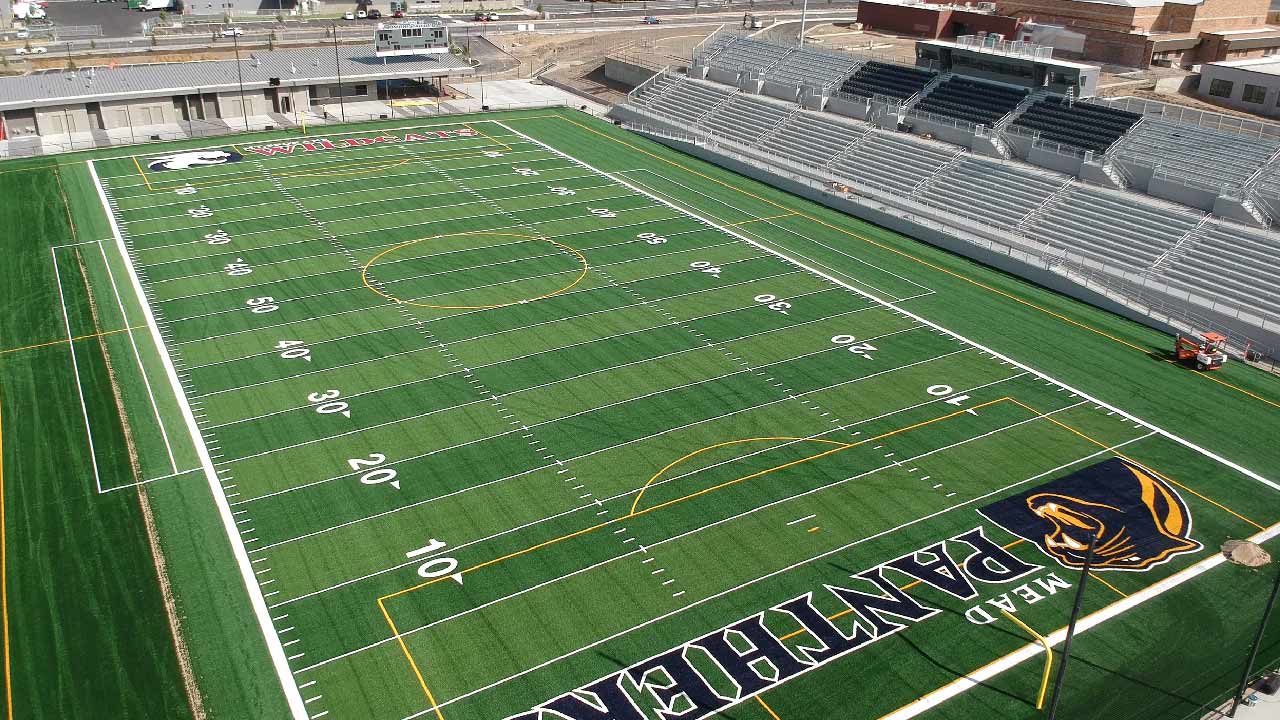How Much Cost to Build a Stadium?
The cost to build a stadium varies widely depending on factors like location, size, materials, and amenities. On average, constructing a stadium can range from $120 million to over $2 billion. Basic facilities might fall towards the lower end, while state-of-the-art, multipurpose venues with advanced technology and luxury features tend to escalate costs. Land acquisition, design fees, labor, infrastructure, and ongoing maintenance are significant contributors to expenses. Additional expenses include permits, environmental impact studies, and unforeseen construction challenges.
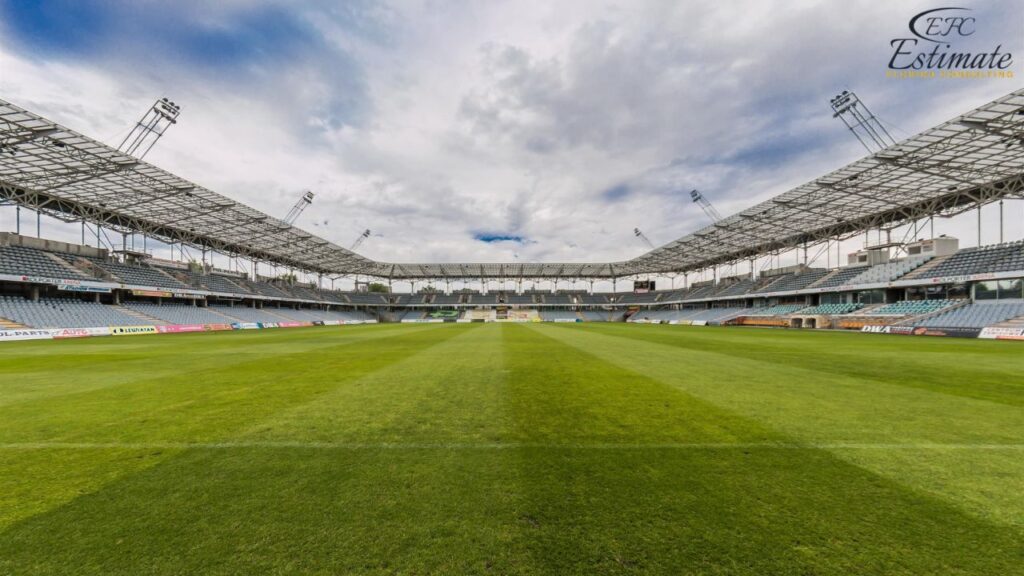
Factors like seismic regulations, accessibility requirements, and sustainability goals can further influence costs. Funding sources also impact expenses, with public-private partnerships or fully private investments altering financial burdens. Overall, building a stadium is a substantial financial undertaking requiring meticulous planning and budgeting.
Stadium Construction Costs per Square Foot
The cost to build a stadium per square foot could escalate accordingly. For instance, a basic stadium previously estimated at $150 to $400 per square foot might now range from approximately $165 to $530 per square foot. Similarly, more elaborate venues initially projected at over $550 per square foot could exceed $650 per square foot after the increase. This adjustment reflects factors such as inflation, rising material costs, or unexpected construction challenges. Consequently, a 100,00-square-foot stadium’s total construction cost could increase from $15 million to potentially over $1 billion, depending on the specifications and complexity of the project. Planning contingencies for such cost fluctuations is essential to ensure the project remains financially viable throughout its development.
Stadium Size (Square Feet) | Estimated Cost Range |
50,000 – 100,000 | $75 million – $200 million |
100,001 – 200,000 | $150 million – $400 million |
200,001 – 300,000 | $300 million – $600 million |
300,001 – 400,000 | $450 million – $800 million |
400,001 – 500,000 | $600 million – $1 billion |
500,001+ | Costs may exceed $1 billion, depending on specifications and complexity. |
Stadium Construction Process
The construction method of a stadium typically involves several key phases:
Planning and Design:
During this phase, extensive discussions occur to determine the stadium’s purpose, capacity, amenities, and architectural style. Architects, engineers, and project managers collaborate closely with stakeholders to translate visions into detailed plans. Factors such as audience demographics, local regulations, and environmental impact are carefully considered. Advanced computer-aided design (CAD) software and Building Information Modeling (BIM) tools help create precise blueprints and 3D models, allowing for virtual walkthroughs and simulations to refine designs before construction begins.
Site Preparation:
Before any construction activity commences, the chosen site undergoes thorough preparation. This includes clearing vegetation, removing obstacles, and leveling the ground to create a suitable foundation. Soil testing helps assess stability and identify any remediation needs. Utility lines such as water, electricity, and sewage are installed or relocated as necessary. Proper drainage systems are implemented to manage stormwater runoff and prevent flooding, ensuring the site’s long-term viability.
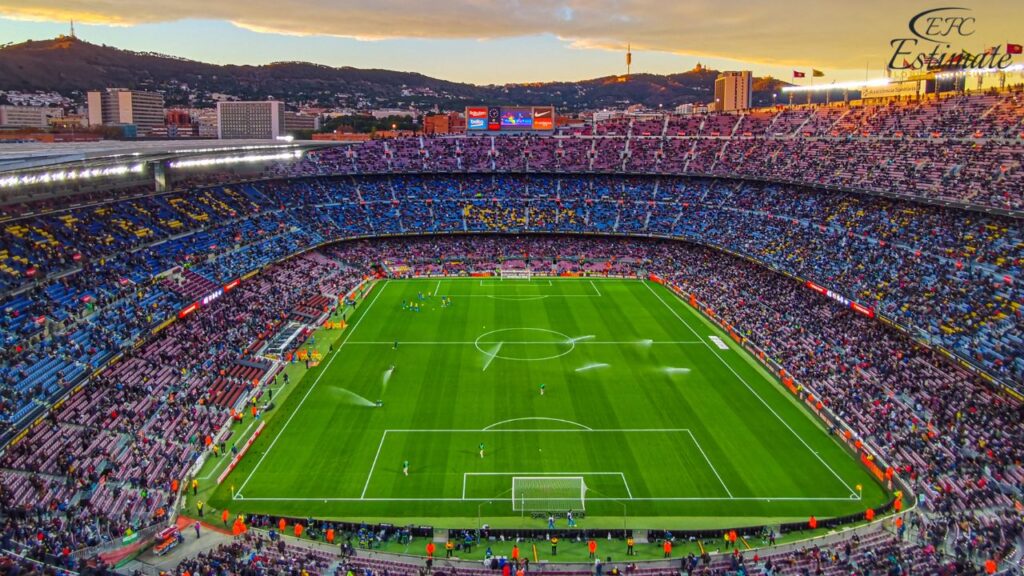
Foundation Construction:
The stadium’s foundation is fundamental to its structural integrity and longevity. Engineers evaluate soil conditions and seismic risks to determine the most suitable foundation type. Common options include shallow foundations like spread footings or deep foundations like piles or caissons for sites with poor soil quality or high loads. Excavation may be necessary to reach stable strata, and reinforcement techniques such as rebar or concrete piers are employed to distribute weight evenly and prevent settling or shifting over time.
Superstructure Construction:
With the foundation in place, construction crews begin erecting the stadium’s superstructure. This phase involves assembling the framework that will support the seating bowl, roof, and other components. Structural elements such as columns, beams, and trusses are fabricated off-site and transported to the construction site for assembly. Steel, concrete, or a combination of both materials may be used, depending on factors like cost, availability, and design requirements. Precision is essential to ensure proper alignment and load-bearing capacity, with quality control measures implemented throughout the process.
Enclosure and Roofing:
Once the superstructure is complete, attention turns to enclosing the stadium and installing the roofing system. This phase varies depending on the desired level of weather protection and architectural style. For open-air stadiums, walls may consist of concrete, glass, or steel panels, while roofing options range from traditional pitched designs to modern tensile structures or retractable roofs. Waterproofing materials are applied to prevent leaks, and insulation helps regulate temperature and acoustics within the stadium. Safety considerations, such as fire resistance and wind load resistance, are carefully addressed to meet building codes and ensure occupant safety.
Interior Finishes:
As the exterior takes shape, work begins on the stadium’s interior finishes. This includes installing seating, flooring, lighting, and signage to create a comfortable and functional environment for spectators. Seating options range from basic benches to premium padded seats, with attention paid to sightlines and accessibility requirements. Flooring materials such as concrete, tile, or synthetic turf are chosen based on durability, maintenance, and aesthetic considerations. Lighting design is critical for both visibility and ambiance, with energy-efficient LED fixtures often preferred. Signage and wayfinding elements help guide visitors throughout the stadium, enhancing the overall fan experience.
Technology Integration:
In today’s digital age, stadiums are equipped with advanced technology to enhance entertainment, communication, and security. This includes large-scale video screens for replays and advertisements, high-fidelity sound systems for immersive audio experiences, and robust Wi-Fi networks for connectivity. Surveillance cameras, access control systems, and emergency response protocols are integrated to ensure the safety and security of guests and staff. Sustainable technologies such as solar panels, rainwater harvesting systems, and energy-efficient HVAC systems may also be incorporated to minimize environmental impact and reduce operating costs.
Download Template For Stadium Project Breakdown
- Materials list updated to the zip code
- Fast delivery
- Data base of general contractors and sub-contractors
- Local estimators
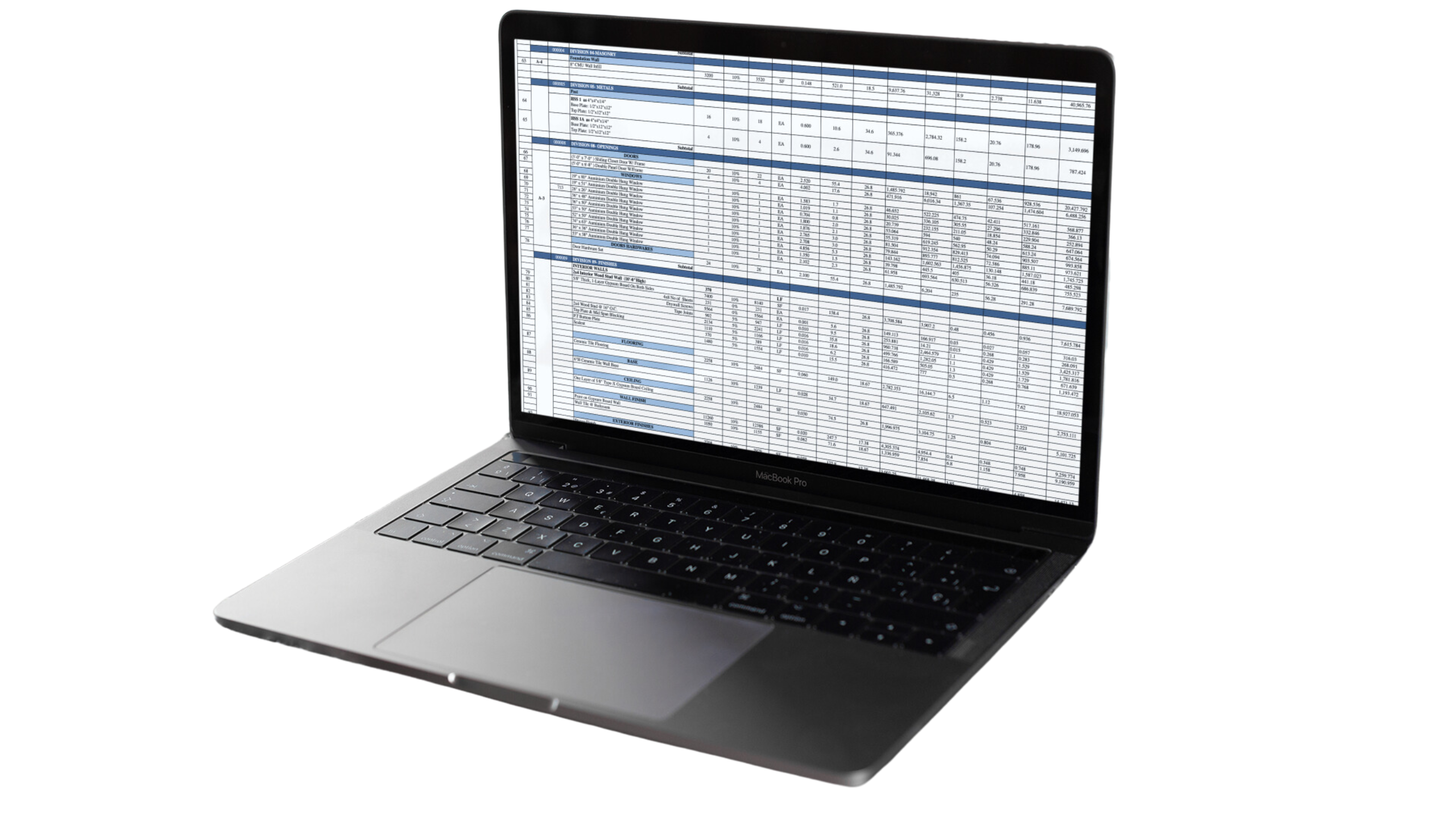
Landscaping and Exterior Features:
The final touches are applied to the stadium’s exterior to enhance its visual appeal and functionality. Landscaping elements such as trees, shrubs, and flower beds are planted to soften the built environment and improve aesthetics. Parking lots, pedestrian walkways, and entry gates are carefully designed to optimize traffic flow and accommodate large crowds. Exterior lighting illuminates pathways and parking areas for safety and security after dark. Public art installations, monuments, and gathering spaces may be incorporated to celebrate the stadium’s cultural significance and foster community engagement.
Stadium Flooring Cost
The cost of stadium flooring can vary widely depending on factors such as the type of flooring material, the size of the stadium, installation requirements, and any additional features like customization or branding. Generally, the price can range from a few dollars per square foot for basic materials like concrete to over $25+ per square foot for high-end options like premium synthetic turf or specialized shock-absorbing surfaces.
Flooring Type | Cost Range per Square Foot ($) |
Concrete Flooring | $3 – $10 |
Asphalt Flooring | $2 – $6 |
Synthetic Turf | $5 – $25+ |
Natural Grass | $1.50 – $3 + ongoing maintenance |
Rubber Flooring | $5 – $20+ |
Interlocking Tiles | $3 – $12+ |
Concrete Flooring:
Concrete is a popular choice for stadium flooring due to its durability and versatility. It can withstand heavy foot traffic and equipment loads, making it suitable for both indoor and outdoor stadiums. The cost of concrete flooring typically depends on factors such as the thickness of the concrete slab, surface finishing (e.g., smooth or textured), and any additional treatments such as staining or sealing. Basic concrete flooring can range from $3 to $6 per square foot, while decorative options may cost $8 to $10 per square foot or more.
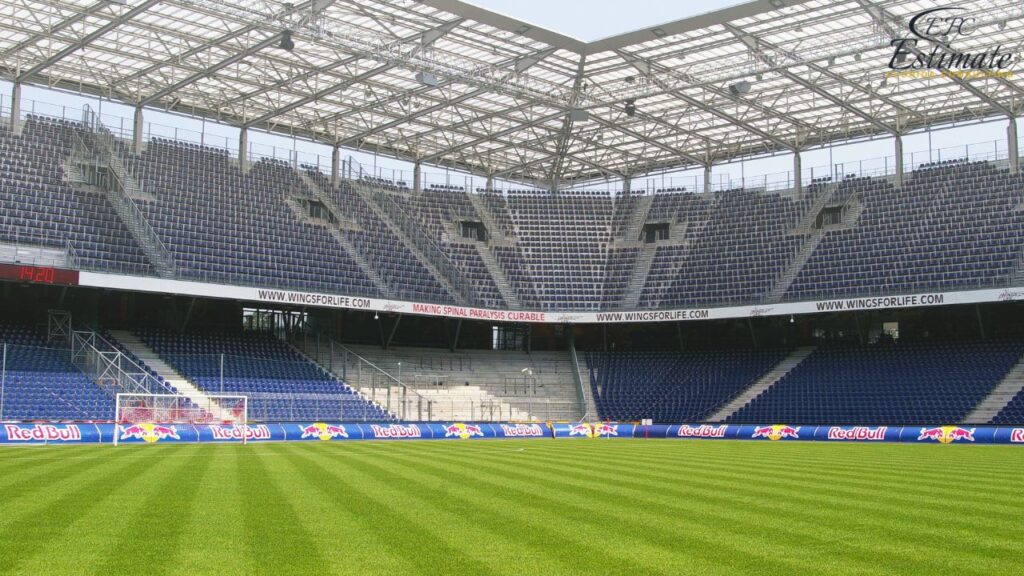
Asphalt Flooring:
Asphalt surfaces are commonly used for outdoor stadiums, parking lots, and access roads. Asphalt offers excellent weather resistance and can withstand heavy loads. The cost of asphalt flooring is influenced by factors such as the thickness of the asphalt layer, the quality of materials used, and the complexity of the installation. Basic asphalt surfaces typically cost between $2 to $4 per square foot, while thicker or higher-quality options may range from $4 to $6 per square foot.
Synthetic Turf:
Synthetic turf has become increasingly popular for stadium playing surfaces due to its low maintenance requirements and consistent playing characteristics. The cost of synthetic turf depends on factors such as the quality of the turf fibers, the backing material, and the infill system used. Basic synthetic turf systems can range from $5 to $8 per square foot, while premium options with advanced features like enhanced durability or shock absorption may cost $10 to $15 per square foot or more. Additionally, installation costs should be considered, including site preparation, turf installation, and infill material.
Natural Grass:
Natural grass provides a traditional playing surface and offers benefits such as natural cooling and aesthetics. However, it requires significant maintenance, including regular mowing, watering, fertilization, and pest control. The cost of natural grass installation can vary depending on factors such as the type of grass selected, soil preparation requirements, and ongoing maintenance expenses. Sod installation typically ranges from $1.50 to $3 per square foot, while ongoing maintenance costs can add up to several thousand dollars per year, including irrigation, fertilization, and turf management services.
Rubber Flooring:
Rubber flooring is a popular choice for indoor stadiums, multi-purpose arenas, and gymnasiums due to its durability, shock absorption properties, and sound insulation. The cost of rubber flooring depends on factors such as the thickness of the rubber tiles or rolls, the quality of the rubber material, and any additional features such as custom colors or patterns. Basic rubber flooring options typically range from $5 to $10 per square foot, while premium options with specialized features may cost $15 to $20 per square foot or more. Installation costs should also be considered, including adhesive or interlocking systems and any necessary subfloor preparation.
Interlocking Tiles:
Interlocking tiles offer a modular and customizable flooring solution for stadiums and arenas. These tiles are typically made from materials such as plastic, rubber, or foam and feature interlocking edges for easy installation and removal. The cost of interlocking tiles varies depending on factors such as the material, thickness, and design of the tiles. Basic interlocking tile systems can range from $3 to $6 per square foot, while premium options with advanced features like shock absorption or custom graphics may cost $8 to $12 per square foot or more. Installation costs are typically lower compared to other flooring options, as interlocking tiles can be installed without adhesives or specialized equipment. However, any necessary subfloor preparation should be factored into the overall cost.
Stadium Size And The Number Of Seating Capacity
Understanding Stadium Size:
Stadium size encompasses various physical dimensions, including length, width, and height. It’s a fundamental aspect of venue design, directly impacting the overall atmosphere and functionality of the stadium. Larger stadiums may accommodate a broader range of events, from sports competitions to concerts and cultural festivals, while smaller venues are often tailored to specific purposes or local communities.
Factors Influencing Size:
The size of a stadium is influenced by a multitude of factors, including its intended use, budgetary constraints, geographical location, and regulatory requirements. For instance, stadiums in urban areas may face space limitations, necessitating innovative design solutions to maximize seating capacity without compromising on safety or comfort. Additionally, considerations such as transportation infrastructure, parking facilities, and environmental impact play a crucial role in determining the optimal size of the venue.
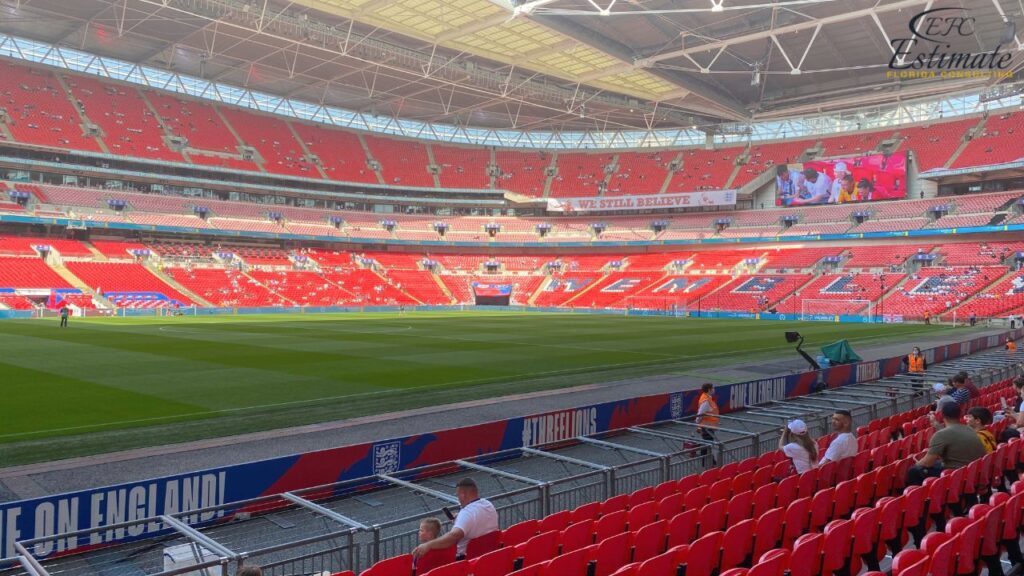
Seating Capacity:
The seating capacity of a stadium refers to the total number of seats available for spectators during events. It is a key metric used to gauge the venue’s scale and accommodate the anticipated demand for tickets. Seating arrangements can vary widely, ranging from individual seats with allocated numbers to general admission areas with open seating. Luxury suites, VIP boxes, and premium seating sections further contribute to the overall seating capacity, catering to different audience preferences and revenue streams.
Implications of Seating Capacity:
The seating capacity of a stadium has significant implications for event planning, management, and revenue generation. Larger capacities allow for greater ticket sales and potential sponsorship opportunities, but also present logistical challenges in terms of crowd control, security, and amenities. Conversely, smaller venues may offer a more intimate setting but could limit revenue potential and audience reach. Balancing these factors is crucial to ensure a positive experience for both spectators and event organizers.
Variations Across Stadiums:
Stadium sizes and seating capacities vary widely across different regions and sports disciplines. Iconic venues like the Maracanã Stadium in Rio de Janeiro or the AT&T Stadium in Dallas boast immense capacities exceeding 80,000 seats, making them suitable for hosting major international events. In contrast, smaller stadiums cater to niche sports, local teams, or community gatherings, with seating capacities ranging from a few hundred to several thousand spectators.
We Provide 3D Rendering Services!
For Commercial and Residential Building
Turnaround time is 1-2 days.
Win More Projects With Us
Conclusion
The cost to build a stadium is a multifaceted endeavor, influenced by numerous factors such as location, size, materials, and amenities. With average construction costs ranging from $120 million to over $2 billion, meticulous planning and budgeting are essential. Adjusting for a 5% increase in construction costs per square foot, we see the potential financial impact across various stadium sizes. The construction process involves several phases, from planning and design to technology integration and landscaping. Additionally, the choice of stadium flooring entails diverse options, each with its associated costs and considerations. Ultimately, understanding stadium size and seating capacity is crucial, as it directly impacts the venue’s functionality, audience experience, and revenue potential. Building a stadium requires careful navigation of financial, logistical, and regulatory challenges, ensuring a successful and sustainable facility for years to come.
FAQs
The cost to build a stadium can vary widely depending on factors such as location, size, materials, and amenities. Basic facilities might fall towards the lower end of the spectrum, while state-of-the-art venues with advanced technology and luxury features tend to escalate costs.
Significant contributors to stadium construction expenses include land acquisition, design fees, labor, infrastructure, and ongoing maintenance. Additionally, permits, environmental impact studies, and unforeseen construction challenges can add to the overall costs.
Factors like seismic regulations, accessibility requirements, and sustainability goals can further influence stadium construction costs. Compliance with such regulations often entails additional expenses for specialized engineering and construction techniques.
Funding sources, such as public-private partnerships or fully private investments, can significantly impact stadium construction expenses. Different funding models may alter the financial burdens associated with construction and ongoing maintenance.
The cost to build a stadium per square foot can escalate accordingly with stadium size. Larger stadiums typically involve more complex designs and higher material quantities, resulting in increased construction costs per square foot compared to smaller venues.
Fluctuations in construction expenses, whether due to inflation, rising material costs, or unexpected challenges, can significantly impact total project costs. Planning contingencies for such fluctuations is essential to ensure the project remains financially viable throughout its development.
Process To Get to Build a Stadium Cost Estimate Report
Here I am going to share some steps to get your cost to build a stadium estimate report.
-
You need to send your plan to us.
You can send us your plan on info@estimatorflorida.com
-
You receive a quote for your project.
Before starting your project, we send you a quote for your service. That quote will have detailed information about your project. Here you will get information about the size, difficulty, complexity and bid date when determining pricing.
-
Get Estimate Report
Our team will takeoff and estimate your project. When we deliver you’ll receive a PDF and an Excel file of your estimate. We can also offer construction lead generation services for the jobs you’d like to pursue further.
Reach Out To Us
Places to visit if you new in Florida
North Ocean Boulevard winds gracefully along the coastline, offering mesmerizing views of the endless expanse of the Atlantic Ocean. Lined with swaying palm trees, charming cafes, and boutique shops, it exudes an undeniable charm and sophistication. From the tranquil ambiance of daylight to the enchanting allure of twilight, this boulevard captivates with its timeless beauty, inviting all who wander its path to bask in the serenity of coastal living.
Seagate Beach epitomizes coastal paradise with its pristine sands, azure waters, and swaying palms. Nestled along the southeastern coast, this secluded haven offers a serene retreat for beachgoers seeking tranquility and natural beauty. The rhythmic melody of the waves lulls visitors into a state of relaxation, while the warm sun kisses their skin. Whether lounging on the soft sands, taking a refreshing dip in the gentle surf, or simply savoring the breathtaking ocean views, Seagate Beach promises an unforgettable escape into blissful serenity.
Lillywoods Highland Beach Resort is a luxurious oasis nestled on the pristine shores of Highland Beach, offering an unparalleled blend of elegance and relaxation. Surrounded by lush tropical gardens and overlooking the glistening waters of the Atlantic Ocean, this exclusive retreat exudes a sense of serenity and sophistication. From the moment guests arrive, they are enveloped in the warm embrace of hospitality, with personalized service and attention to detail at every turn.
The center boasts an indoor museum showcasing captivating exhibits, intimate aquariums, and a charming gift shop. Step outside to discover expansive outdoor attractions, including impressive aquariums housing diverse ecosystems for fish, turtles, and other marine creatures. Wander along the boardwalk trail through the neighboring woods or immerse yourself in the enchanting butterfly garden designed for peaceful observation.

